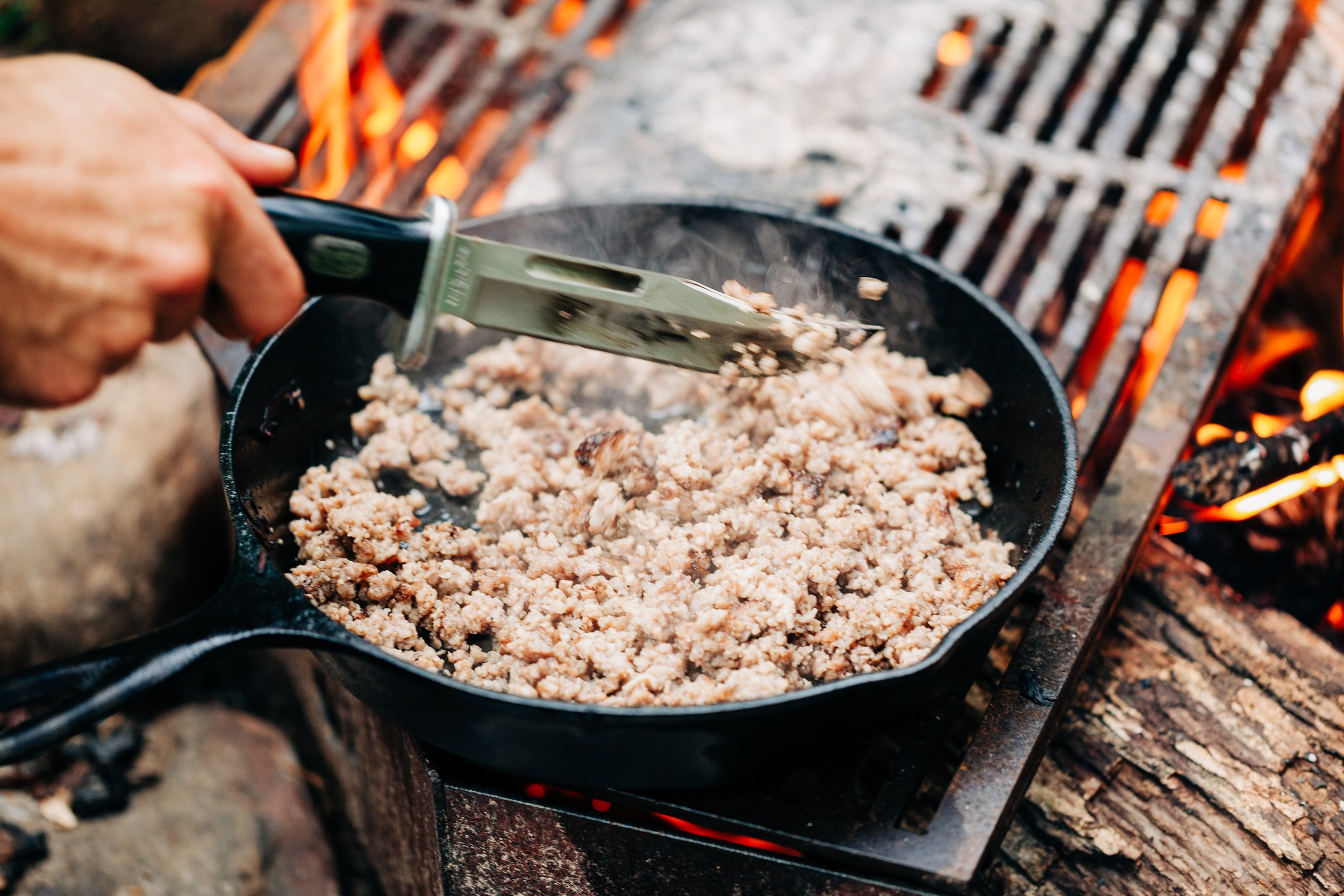Six Tips for Cast Iron Cooking
Cast Iron pans, when used and cared for correctly, can last generations. And in the south, we know there’s just something special about making our favorite dishes in our grandparents’ hand-me-down pans. We don’t know if it’s the flavor or the nostalgia, but it’s there.
So why is it that our grandparents’ pans are so amazing while the new ones we pick up at Cracker Barrel or Buc-ees just fall flat? We’re convinced the magic is somewhere between the seasoning, the care and the continued use. For this blog, we pulled together our best six tips for using and caring for your cast iron – old or new.
Seasoning: If you have a new cast iron skillet or pan, you have to start with seasoning your pan. Our favorite method is to rub it down with a thin layer or oil and bake it at 450 for a couple of hours. The new trend is to use flaxseed oil. While our grandparents probably used lard, we wouldn’t recommend it – animal-based fats can go rancid if you aren’t using your pan regularly. If you have a well-loved pan that’s starting to stick, you can season that too!
Oil: You have to use the right kind of oil in a cast iron pan. We know a billion recipes call for olive oil, but the smoke point on olive oil is really too low for cast iron and it can damage your pan. The best dishes really call for a high-heat oil like grapeseed or canola. If you want to be trendy, avocado oil is popular too. PS: Don’t be afraid to use more oil than you think you might need. Cast iron can dry out your food if you don’t use enough.
Heat: Cast Iron will conduct and hold heat for a long time, but it also takes a long time to get hot. If you put your food in before the pan is the right temperature, it’s going to stick, cook unevenly and dry out. This heat also makes cast iron perfect for cooking fried chicken and steak. A word of caution though… start on low heat because once that pan is too hot, you’re going to be waiting a while for it to cool down.
Baking: If you haven’t watched your grandmother make Dutch Babies or Corn Bread, then you might not know that cast iron is fantastic for baking too, but there are a few tricks. If you’re going to bake in your pan, you absolutely need to grease it. Like a lot. Also, you take the pan out of the oven, pull it just a little bit early. That pan is going to stay hot for a while and you want to let your baked dish rest before flipping it out of the pan.
Skip: Of course, for all the awesome ways to cook in cast iron, there are a few things you should not cook in it too. Acidic foods – we’re looking at you tomatoes – can damage your seasoning. Delicate and sticky foods, like eggs, fish or cinnamon buns, can be almost impossible to clean off your pan if it’s not ridiculously well seasoned.
Cleaning: It’s pretty easy to clean cast iron, but it’s best to it immediately after use. If you let food sit, it will be more difficult to clean and can start to rust. Wash your cast iron skillet or pan by hand with warm water and mild soap. Don’t use the dishwasher and never store your pan wet or it’ll start to rust.
One recipe we haven’t talked about is Spinach Artichoke Dip. It’s ahhhmazing in a cast iron skillet! If you don’t have a skillet ready – or you want those flavors right now – you can grab our Taste of the South Cast Iron Spinach Artichoke Dip at your local grocery store. Enjoy!

